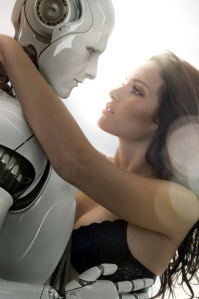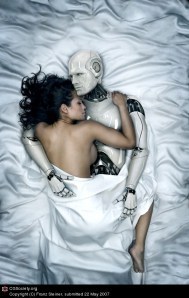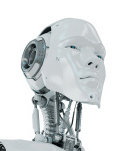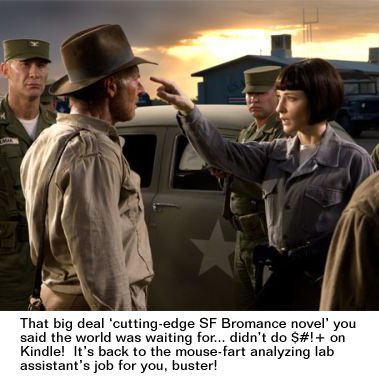Steven Lyle Jordan's Blog, page 51
March 10, 2014
March newsletter is out!
 The March newsletter, A Futurist’s Updates, was released on Wednesday. If you’re interested in receiving it, you can sign up here, or follow the link in the left menu.
The March newsletter, A Futurist’s Updates, was released on Wednesday. If you’re interested in receiving it, you can sign up here, or follow the link in the left menu.


March newsletter in the works
 I’m putting the final touches on the March newsletter, A Futurist’s Updates, right now. If you’re interested in receiving it, you can sign up here, or follow the link in the left menu.
I’m putting the final touches on the March newsletter, A Futurist’s Updates, right now. If you’re interested in receiving it, you can sign up here, or follow the link in the left menu.


March 5, 2014
Cable outage
 Yesterday Winter bestowed its final insult on my household: It took out the cable.
Yesterday Winter bestowed its final insult on my household: It took out the cable.
And I have bundled service, which means I’ve lost television, internet and the land-line phone. If my cellphone didn’t work in the house (and some days, that’s a close thing), I would have no communication at my home.
So, I’ll be taking off on Thursday to wait for the cable guy to come and reconnect my home with the world. This is one of those “you don’t know what you’ve got ’til it’s gone” moments. It’s true that, thanks to my cellphone, I’m not completely cut off from the outside world: I can make calls, get a bit of internet and social media, and conceivably watch a TV show or video over a decent connection (though, because of my distance from the nearest cell tower, that’s not happening). But what I lose is the broadband connection of a fiber line; I lose a few hundred television stations (and a few decent radio channels); I lose the simple security of a clear phone call over a land-line; if I was a gamer, I’d lose the ability to play remotely with my friends, or even solo on the big online FPS and RPG sites.
I know a few people who would have the shakes just contemplating it.
Fortunately, I’m not one of them. I can wait out a few days’ outages, and catch up on the few TV shows I watch at a later date (mostly online). I can even plug in a DVD or two hundred, if I really want to stare at the tube… uh, pixels all day.
And I don’t game. I write. And I happen to be in the middle of a revision to one of my novels, for an imminent re-release, as well as a short story waiting for its first words. And a new cover to be finalized for said novel. And some particularly gnarly blinds in the bathroom that need to be cleaned. And a few books and magazines on my Nook, waiting to be cracked. And a kitten in the house to play with. And an exercise room to sweat up. And—
Wait… why am I staying home again? Oh, right. Cable. It’s probably ice in the box.
Other than the disappointment that my land-line phone has been compromised by the signal-bundling thing that I thought was such a great idea at the time… I don’t even see this as an incredible imposition. Especially if the cable guy shows up on the day promised, and fixes the problem in one visit. That would make 2-1/2 days of no cable in my house, and no big deal.
It’s not as if I’m in an area that has no service ever. It’s not like I’m on a third world island. It’s not like I can’t afford a phone line, or I live in an area that doesn’t have television. Or radio. It’s not like I lost power in one of the nastiest winters on record.
(It’s not like I can’t sneak online at work.)
So go ahead. Do your worst. I can take it. I’m an American, and I’m spoiled and advantaged as all hell. If I don’t like no cable, I’ll drive in my car to Ruby Tuesdays and have a beer while I watch their TVs. Their six TVs.
Actually… I think I’m gonna stop right here. Heh.


March 3, 2014
R.I.P. Aaron Allston, 1960-2014
 I’m shocked and sad to hear about the passing of Aaron Allston yesterday, from heart failure. I personally loved his Doc Sidhe novels (I’m a big Doc Savage fan, on which the Sidhe books were based), and was looking forward to seeing them released as ebooks; but he was better known for his Star Wars novels, set in the SW Extended Universe.
I’m shocked and sad to hear about the passing of Aaron Allston yesterday, from heart failure. I personally loved his Doc Sidhe novels (I’m a big Doc Savage fan, on which the Sidhe books were based), and was looking forward to seeing them released as ebooks; but he was better known for his Star Wars novels, set in the SW Extended Universe.
A publisher I’ve recently connected with had a working relationship with Aaron, and I’d hoped it would mean a chance to meet him some time in the next few months. Now, not only am I sad that I missed him… but I’m slightly alarmed, as he happened to be the same age as me (something I’ll unfortunately be thinking a lot about, as I shovel the latest batch of snow from my driveway today).
My thoughts are with his friends, family and colleagues. Sorry I never had the chance to meet the guy.


New cover for The Lens
I plan to do more work on this, but it may be the 2014 cover for The Kestral Voyages: The Lens.
This cover is proving especially tricky, because of the subject of the book—are the problems to the Engineers’ terraforming efforts being caused by a terrorist leader, or a planet that is somehow sentient and angry?—which is defying my efforts to visualize. Also, although I found a great model for Carolyn Kestral, I haven’t been able to find a lot of good photos of her to use on a Kestral cover. The shot above is obviously the same one used in My Life, After Berserker, and I think I’m stuck with it.
Fortunately (depending on how you look at it), the Washington, D.C. area has just been dumped on by another SnowNotAgain, and my office is closed today; so I’ll have more time to mess with this and see if I can do something else.


March 1, 2014
Indie author’s wife
February 27, 2014
Robots: Our future companions
 I’ve pontificated on robots as tools, slaves and devils. I’ve discussed the possibility of robot sentience. Now it’s time to talk about the real issue: Whether robots will ever become satisfactory replacements for humans… including as companions, and even love interests.
I’ve pontificated on robots as tools, slaves and devils. I’ve discussed the possibility of robot sentience. Now it’s time to talk about the real issue: Whether robots will ever become satisfactory replacements for humans… including as companions, and even love interests.
With the recent release of Her, the question of whether humans can fall in love with something that clearly isn’t human has been discussed at length. As I said in my own post, the idea of falling in love with something not human is nothing new, no more than falling in love with someone who is physically different from you is unusual. Today’s news is also full of the idea of non-heterosexual relationships and the sanctioning of same-sex marriages. Clearly the standard heterosexual relationship is no longer the only game in town. Computers and robots simply represent the next object of our potential love interests.
 Science fiction media has given us plenty of examples of human-robotic sex over the years. In media like television and movies, it is usually presented in a very (ahem) tongue-in-cheek fashion, as it has been done on Star Trek: The Original Series, Star Trek: The Next Generation, and A.I. Artificial Intelligence. Reading between the lines, it has been made clear in the previous examples that sex between a human and a robot is considered a breach of morals, something that humans would not do if they were not desperate. It is sex, but not love.
Science fiction media has given us plenty of examples of human-robotic sex over the years. In media like television and movies, it is usually presented in a very (ahem) tongue-in-cheek fashion, as it has been done on Star Trek: The Original Series, Star Trek: The Next Generation, and A.I. Artificial Intelligence. Reading between the lines, it has been made clear in the previous examples that sex between a human and a robot is considered a breach of morals, something that humans would not do if they were not desperate. It is sex, but not love.
But just as we tried to determine sentience in the last robot-themed post, finding the dividing line between sex and love can be difficult… and sometimes, utterly pointless. For some, there simply is no dividing line between sex and love; for others, sex and love will never intersect. This doesn’t lessen or strengthen one or the other… it simply is, a fact to be accepted.
There’s little point in discussing whether or not a human could become physically attracted to sex with a robot. Humans use all manner of non-human objects and devices to have sex, effectively allowing their own imaginations to fill in the blanks. As robots become more physically (and, presumably, sexually) sophisticated, it’s not at all out of the question for a human to be able to have sex with a robot and imagine that it is another human.
So, the real question is: Can a human love a robot as much as they could love another human? If we were talking about a mannequin or a dildo, we could say that, in most cases, a human would not love the object as much as they could another person. But robots are on the cusp of sentience. Sentience may allow a robot to learn about a person and accurately discern their emotions; and either return those emotions honestly, or provide a close-enough approximation of them to satisfy humans as to their honesty. (Hey, we fool ourselves into thinking our pets love us in the same way, every day.)
In fact, for all we know, a high-enough level of sentience may result in robots actually developing true emotions of their own… in which case, humans won’t have to fool themselves that robotic emotions are real. But given humans’ uncanny ability to rationalize almost anything into being truth, I’d submit that robots don’t need to develop actual emotions; they only need to be able to approximate them well enough to allow humans to accept them as real.
Let’s face it: For humans, this is not a stretch.

As this subject is a major element of my novel Sarcology, I almost used this image for the novel’s cover. Art by Franz Steiner.
Manufacturers are already selling “sex robots,” expensive limited-response mannequins that are a few levels above the old standard of blow-up dolls. Some researchers postulate that we will have robotic brothels by 2050. And somewhere between the two, we’ll probably see average people bringing robots into their homes to be permanent emotional and sexual companions.
Depending on how fast robot intelligence/sentience develops, we could see petitions and lobbying for human-robot marriages at around the same time as the brothels open.
And won’t the dating world become interesting, when potential lovers and suitors have to compete with robot companions… or be forced to wait until their potential lovers get tired of their robot companions and finally decide to go with the real thing. Human-robot couples may even adopt children, or resort to IVF, surrogates, cloning or other methods of reproduction, and eliminate the need for human-human coupling and sex in order to start families.
(Actually, considering how badly we need to reduce human population on Earth, that might be a good idea…)
This post is a followup to Robots and sentience and Robots: Tools, slaves and devils.


February 26, 2014
American Hustle: A lesson in over-the-top characters?
 This weekend, I finally had the chance to see American Hustle, which I greatly enjoyed. (Yes, my movies don’t all have to have robots and alternate universes in them.) The movie featured a gross ton of class acting, even in the bit parts (De Niro! Zerbe!), and the story was a lot of fun all around.
This weekend, I finally had the chance to see American Hustle, which I greatly enjoyed. (Yes, my movies don’t all have to have robots and alternate universes in them.) The movie featured a gross ton of class acting, even in the bit parts (De Niro! Zerbe!), and the story was a lot of fun all around.
But when it was over, it occurred to me that one of the reasons that so many of these actors (and the movie) were on the short list for Oscars this year, was the preponderance of over-the-top characters. And I wondered if that was something I needed to think more about.
Christian (Batman) Bale, pictured above, stands out the most here, as the elaborately combed-over, jazz-loving, philandering, overweight and weak-hearted suburban con man Irving Rosenfeld (even the name sounds over-the-top in “average Joe” territory). But there’s something over-the-top about every character in this movie, from the overly-dependent wife, to the curler-wearing IRS agent, to the con-loving other woman, to the Camden Mayor with the large family, including an adopted black kid, to the shadowy mobsters (De Niro!) and senators (Zerbe!). Few of the characters here seem ordinary; every one is, literally, a character. And maybe the best part: They are all based on real people!
Okay, real loosely, but still.
At any rate, here you have a movie real loosely based around the events of Abscam, stocked with nothing but over-the-top characters, and this movie gets Oscar, Golden Globe and SAG awards up the wazoo.
Have I been missing something?
When I write novels, I try to create characters that have interesting aspects about them, but who are essentially regular people trying to fit into a regular world. When they are out in my literary “public,” they don’t stand out like Where’s Waldo at a chimneysweeps’ convention. I figure everyone has a personal secret or two, but in general, they don’t wear those secrets on their sleeves when they go out in public. Maybe one or two characters will have something seriously, noticeably unusual about them, but they will be few among many more publicly-average people.
In Hustle, everyone’s secrets were on their sleeves. In neon. With attached sparklers. And the audience loves it.
And come to think of it, that’s the way it usually goes in movies. How many well-remembered movie characters don’t have their secrets on their sleeves? Everyone remembers the Shadow, Lamont Cranston… who remembers Claude Fellows?
It occurs to me that I may have way too many Fellows in my novels, and not enough Cranstons. My most popular novel series, the Kestral Voyages, have the most atypical characters in my roster; the books with the fewest atypical characters are also my least popular. Likewise, these days I tend to read books with the most atypical characters per capita in them (I knew there was a reason I liked The Dresden Files besides mere magic). This thought is hitting me like a Nook to the back of my head.
As I happen to be developing a short story at the moment, and considering which writing projects I’ll jump on next, I just know that I’ll now be looking at all my characters to see where I can add in a bit of private weirdness here, a badly-concealed secret there, in order to spice them up beyond my usual salt-and-pepper treatments. At the same time, I can’t let these traits overcome my stories; they must weave into them.
Like a good hair weave, I suppose.


February 25, 2014
Robots and sentience

iStock Photo
Robot. Sentience. They are two words that, when considered at the surface, don’t seem to be able to go together. After all, a robot is a mechanical creation, generally considered incapable of sentience, or full self-awareness. We specifically use the word “robot” to imply that the machine cannot have sentience; a robot is a clockwork thing.
When we try to suggest that a mechanical creation has sentience, we tend to immediately rename it. Cyborg. Android. Replicant. Synthezoid. We distance ourselves from the word “robot,” and seek to redefine the creation to stand for something beyond its mechanical parts.
Is it because we want to keep the concept of “robots” as simple things? Or is it because we see sentience as being beyond mechanical creations? Do we see sentience as requiring some special spark that robots are incapable of?
Sentience, or self-awareness, is a difficult thing to define, describe or prove. The basic definition, as stated by Merriam-Webster, is “responsive to or conscious of sense impressions.” But that definition can be ascribed to creatures large and small, from humans to whales to ants; it’s not enough of a definition for our purposes. Sometimes we’ll default to some semblance of a soul, or “divine spark”… but, again, we have no real way to define, detect or prove the existence of souls. So that’s hardly useful.
In fact, the only practical definition we have of sentience seems to be: Acting independently of, or in spite of, instinctive responses. If you can equate instinct with robotic programming, then any robot that can act independently of its programming would be by definition sentient.
This is still a vague definition, since it’s difficult to pin down instinct, even in humans. Though we don’t like to admit it, we still have a basic instinct for self-preservation; but our brains can examine an instance where self-preservation is a priority, weigh multiple strategies to achieve self-preservation, and select the optimum action. How much of that can be considered instinct? Possibly all of it, right down to recalling a set of Kung-Fu moves we learned from television that might be useful in saving our necks, and applying it to our attacker. Or maybe the time-honored method of throwing up our hands in surrender, and offering to talk out the problem.
These, and many other actions, are well within the bounds of the “fight or flight” response, which is considered instinctive. In fact, you can boil down most of our daily actions to their instinctual roots, namely, our instinct for self-preservation, for establishing ourselves in social groups, and for satisfying appetites (nutritional and sexual). With all that in mind, where, exactly, does sentience come in? And if we have a hard time defining it in humans, how, exactly, do we define it in robots?
Maybe there’s one very easy way to detect sentience in robots: Don’t give them any pre-programmed instructions… no instincts. Then any independent action they take is free of instinctual roots, and therefore, sentient. Extending this a bit, if you can identify any action a robot takes that is completely unencumbered by any preprogrammed instruction—say, if a robot is offered an equal choice of power sources, but it has no pre-programmed sense of self-preservation, hunger, etc, that drives it to charge itself—any choice it makes is independent of programming, and is therefore sentient.
This isn’t to say that we should create robots without instinctive drives. No creature on this planet lives free of instinct, including humans; sentience and instinct must work together in all higher animals. A robot without instinct would have no reason to learn, or to care about the impact its actions have on the world. It would probably be a pretty dangerous thing to have around.
Asimov certainly understood this when he famously wrote his Three Laws of Robotics, designed to make sure robots would obey humans, but never hurt humans or allow them to come to harm. This is akin to putting a tiger in your home, but giving him instinctive drives to obey you and not hurt you. But more: Putting him into a cage that would prevent him from striking at you, even unwittingly. Asimov’s laws restricted robots more than any instinctive drives ever seen on this planet.
And we’ve already seen, in Asimov’s later writings, that the Three Laws can be subverted; robots could use the logic of the Three Laws to decide that humans needed to be tightly controlled for their own good, or that the birth of a child should be prevented if its birth meant certain future suffering of other humans. The Three Laws are not air-tight, and can be used as a basis of interpretation in extreme situations (as many of Asimov’s stories illustrated).
And this is where sentience comes in: When instinct alone doesn’t provide a solution, or where multiple choices exist to satisfy that instinct, sentience steps in to make the choice. It separates the robots that act from the robots that stand immobile, frozen by instinctive paradoxes or logic loops.
Human brains are highly complex, and store a vast quantity of memory information, all of which is brought to bear to make a decision. We cannot say for sure how much of the decision-making we do is due to instinctive responses, and how much is derived from abstract thought based on a combination of complete and incomplete data and the need for rationalization to arrive at a solution… sentience. If, potentially, every possible decision has at least one non-fully-quantifiable variable in it, it can be said that sentience must ultimately control every decision made.
Sentience would seem, therefore, to be highly possible in a robot, given enough of a brain and memory capacity to handle memory storage and evaluation mostly free of instinctual input. We are approaching the edges of robot sentience now, mostly with testbed-locked mechanations that are learning to speak and respond to their creators, interpret voice and facial patterns, and recreate them. We’re a long way from the robots of the movies that can take initiative for themselves. But we’re taking the first steps to creating them now.
This post is a followup to Robots: Tools, slaves and devils.












